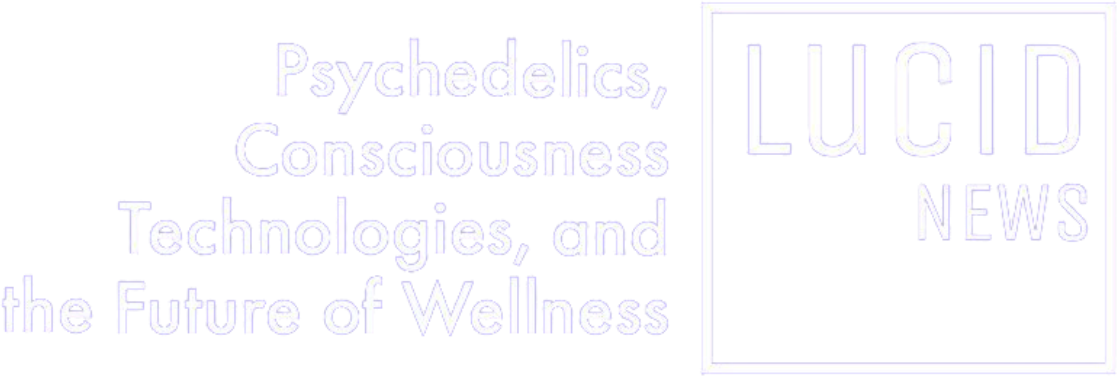The EU is Inching Closer to a Psychedelic Renaissance

On a frigid February morning in 2020, David Nutt’s phone rang in his Imperial College London office. The voice on the other end was Tadeusz Hawrot, a Polish-born expert doing policy and advocacy work with European Union institutions, calling from Lisbon. “The time has come,” he said.
Nutt and Hawrot met two years earlier in Brussels, the political capital of Europe, where the Englishman was president of the European Brain Council, a Brussels-based NGO for patients with mental illness. Nutt is a neuropsychopharmacologist and psychedelic activist, and was briefly a scientific advisor to the British government on the subject. However, he is best known for this chart on the relative danger of drugs:
Compared to the one million annual alcohol-related deaths in Europe, psychedelic-related deaths are relatively scant, falling in the dozens. Still, alcohol is legal while LSD and psilocybin mushrooms are banned.
During that first meeting in Brussels, the political capital of the European Union, the British scientist and the Polish activist agreed on the need for psychedelic policy reform. Although the “psychedelic renaissance” was making great strides in North America and Australia, Europe seemed to be lagging behind.
Their meeting laid the groundwork for the foundation of PAREA, a “coalition” of European psychedelic associations (including The Beckley Foundation, Open Foundation, and ICEERS); medical associations such as the European College of Neuropharmacology, the European Psychiatric Association, European Brain Council; and a number of patients’ associations.
Hawrot lives in Lisbon, close to the headquarters of the European Monitoring Centre for Drugs and Drug Addiction (EMCDDA). Europe is lagging behind the U.S. on psychedelics, but less so, explains Hawrot. “We are waking up the European regulatory giant,” he says. “Regulation is important because we want to avoid the premature introduction of psychedelic therapy before it is fully regulated, otherwise it can endanger patient health and the long-term sustainability of psychedelic treatments…and we don’t want to repeat past mistakes.”
The “sleeping giant” started to wake up on December 6, 2022, a historic day for the “psychedelic renaissance” in Europe. The European Parliament held a conference in Brussels on psychedelic-assisted therapies promoted by PAREA, and with the participation Nutt, Hawrot, Jan Ramaekers, and the psychopharmacologist Antón Gómez-Escolar, one of Spain’s most recognizable faces in the psychedelic space.
Gómez-Escolar got a “very good impression” from Brussels. “The MEPs who came to listen to us came with their homework done, they knew what we were talking about.” The researcher and disseminator of psychedelic-assisted therapy says that there is an “urgent situation” in the mental health of Europeans, one that has only worsened since the pandemic.
Mental Health in Europe
One in six European citizens suffers from a mental health problem, with a considerable economic impact amounting to 4% of the European Union’s GDP, according to a recent article in The Lancet. The pandemic and quarantine have been particularly hard on the youngest segment of the population. The number of young adults (18-29 years old) experiencing symptoms of depression has doubled between 2019 and 2021 on the continent, while in Nordic countries like Norway, Sweden, Iceland, and Estonia, the figure quadrupled to a staggering 30-40% of the population.
Mental health professionals lack the tools to adequately address this flood of new patients. In the words of Amanda Feilding, founder of The Beckley Foundation and Europe’s most iconic psychedelic drug advocate: “Despite the rapid growth of the problems, there has certainly been very little progress in terms of treatment options since 1974, with the discovery of selective serotonin reuptake inhibitors such as fluoxetine and citalopram. That’s all to date.”
Nutt, Feilding’s colleague and ally, corroborates: “The field of research and innovation in psychiatry has been quite dull in recent decades, and psychedelics are likely to be the most profound breakthrough in this field since the 1950s.”
Nutt, Feilding and researcher Robin Carhart-Harris formed an influential research triangle on psychedelics from 2008 to 2020, through a partnership between Beckley and Imperial College London.
The British Exception
The United Kingdom left the European Union on January 31, 2020, following the Brexit referendum. This new status allows the British Isles to dissociate itself – for better or for worse – from Brussels’ decisions.
In the case of psychedelic therapy, the British Treasury has approved a £10 million fund for the Medicines and Healthcare products Regulatory Agency (MHRA). This money will be used to accelerate the roll-out of innovative medical treatments, including psychedelics. As a result, the UK could shorten the time it takes to bring psychedelic-assisted therapy into the UK healthcare system by one to two years, putting it on a par with the U.S. and bypassing Brussels’ cumbersome bureaucracy.



Awakening the “Sleeping Giant”
To understand the process of regularization of psychedelic therapies in Europe, it is necessary to understand the inner workings of European Union institutions. The decision to include psychedelics in the tool box of health care providers rests with the Amsterdam-based European Medicines Agency. However, “the EMA does not approve medicines, but makes recommendations to the European Commission, which puts the final stamp on them,” explains Hawrot.
The European Commission comprises representatives of the 27 national governments that make up the European Union, and functions as the executive branch of the institution. The Council’s proposals are debated and approved by the 700 members of the European Parliament, who are elected by popular vote in each member state.
Once this procedure has been completed, each member state must transpose the directives approved by the European Commission into national law before hospitals can administer MDMA or psilocybin to patients. This “transposition” is mandatory.
In the case of psychedelics, there is one final hurdle to overcome: the inclusion of these substances in the lists of banned substances of the Single Convention on Narcotic Drugs (1961), whose implementation is closely monitored by the INCB, a UN body based in Vienna.
“It is not strictly necessary, but it would be tremendously useful if psychedelics were taken off the list of banned substances,” says Antón Gómez-Escolar, director of the book series Guías del Psiconauta. “In fact, the scientific use of substances is always authorized, regardless of their legal status, but it is true that in terms of scaling this up to the national health service level, it would be a major problem if these substances were to remain in Schedule 1.”
Gómez-Escolar cites Australia, which recently became the first country in the world to authorize the therapeutic use of psilocybin mushrooms and MDMA. The initiative did not come from the Australian Medicines Agency, but from the parliamentarians themselves, who consider the efficacy of these drugs in treating mental illness, also an epidemic in Australia, to be sufficiently proven. By approving this use, Australia would be in breach of international narcotics legislation. So far, no one has called for Australia to be punished for bucking the agreement.
Spain, the Renaissance That Could Have Been
The push to get MDMA approved for the treatment of post-traumatic stress disorder in the U.S. by MAPS is about to come to fruition. Similar research began in Spain more than 20 years ago, but was abruptly halted by politicians fearful of MDMA and its notorious association with nightclub deaths.
That early research was led by José Carlos Bouso, one of a prominent psychedelic drug researcher, who at that time worked with the late Dr Jordi Riba studying the neurological effects of ayahuasca. Their research was decades ahead of other laboratories that are currently leading the so-called “psychedelic renaissance.”
“Unfortunately, we have a tremendously ignorant political class that doesn’t look beyond its own prejudices or those of its voters,” according to Gómez-Escolar. While Spain currently lacks a psychedelic industry, it has certain elements that make it an ideal country for the psychedelic renaissance to flourish: lax drug legislation (compared to its neighbors Italy and France); a long and lively tradition of underground shamanism; an excellent climate for psychedelic retreats; and a high social tolerance for narcotic use.
However, Spain is unlikely to become the Jamaica of the continent. The two parties alternating in power, The People’s Party and The Spanish Socialist Workers’ Party, are competing for the scepter of prohibitionism, and will only make a move when Europe legislates in favor of psychedelic therapy. This immobility explains why advocates of psychedelic therapies believe it is worth lobbying in Brussels instead of waiting for a miracle in Madrid.
Featured Image: Psychedelic-assisted therapies in the treatment of brain disorders, in Brussels. Source: PAREA.








